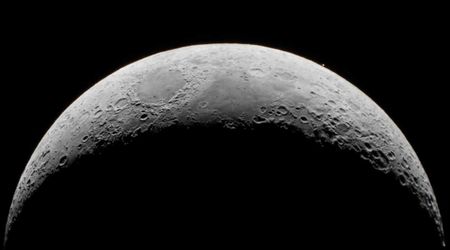High school student stuns astronomers by revealing 1.5 million previously unknown objects in space using AI

There is no set standard for intelligence and innovation, nor is there an age limit for wonderful discoveries. This is an apt fit for a local high school student, Matteo (Matthew) Paz, who revealed 1.5 million unknown secrets of the universe, as per Caltech. The Pasadena High School senior developed an AI algorithm that led to these discoveries. This was presented at the 2025 Regeneron Science Talent Search, run by the Society for Science. This algorithm can be useful in space exploration and for other astronomers and astrophysicists to adapt for their own research.

Paz was awarded first place, along with $250,000, for his innovation that was published in a single-author paper. The study described the AI algorithm that was capable of sifting through multiple spatial datasets. The paper was published in The Astronomical Journal. This discovery began with the idea of the variable objects present in NASA’s observations. The NASA telescope detected heat signatures with varied intensities of distant cosmic objects. However, their data was not cataloged due to their bulk, as they were unnecessary inputs during important observations.

To record this data, astronomers were dependent on NEOWISE (Near-Earth Object Wide-field Infrared Survey Explorer). This retired infrared telescope had scanned the entire sky to search for asteroids and other objects for more than 10 years. If the NEOWISE team could go through the records and catalog the required objects, it would be easier for astronomers to observe them for changes. This was of interest to Astronomer and IPAC senior scientist Davy Kirkpatrick, who was Paz’s mentor. He decided to form a team to scan portions of the sky and report anomalies.

"At that point, we were creeping up towards 200 billion rows in the table of every single detection that we had made over the course of over a decade," Kirkpatrick stated. "So my idea for the summer was to take a little piece of the sky and see if we could find some variable stars. Then we could highlight those to the astronomic community, saying, 'Here's some new stuff we discovered by hand; just imagine what the potential is in the dataset,'" he added. However, Paz had a different idea in mind and wanted to subtract the task’s manual labor from the equation.

Paz’s innovation involved his interest in AI from a school elective that combined coding, theoretical computer science, and formal mathematics, as per Phys Org. As AI is best trained on large datasets, he created an algorithm that would analyze the entire dataset and catch any potential variable objects. He drafted the model for the machine learning technique by consulting his mentor about relevant astronomy and astrophysics. As NEOWISE data did not consider minute detections, Paz refined his model to process all of the observed raw data and analyze the results.
This detection of minute changes in the telescope's infrared measurements allowed the algorithm to identify 1.5 million new objects. Paz and Kirkpatrick plan on publishing the entire dataset this year. "The model I implemented can be used for other time domain studies in astronomy, and potentially anything else that comes in a temporal format," Paz commented. With a prize-winning discovery in hand, the high school senior is already working for his mentor at Caltech in his first paid job. His innovation is believed to be significant to astronomers across the world.
























